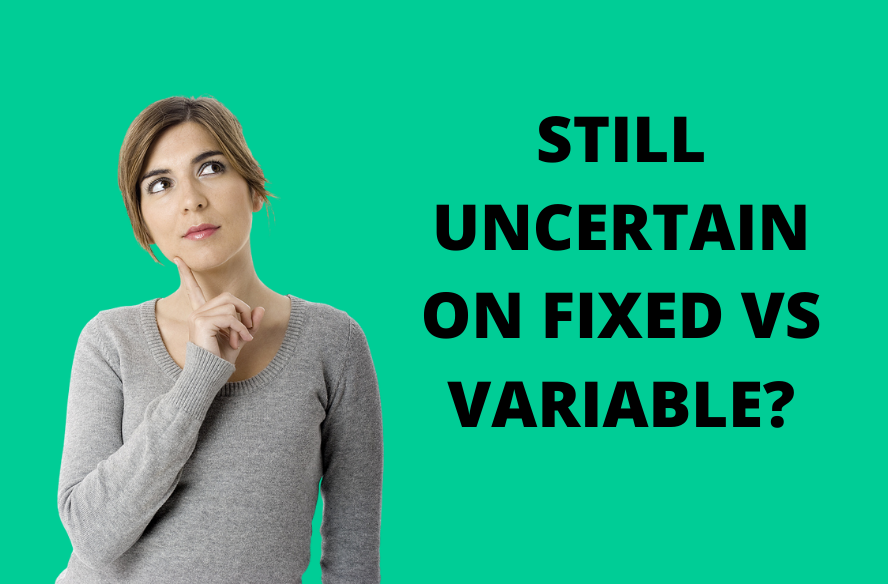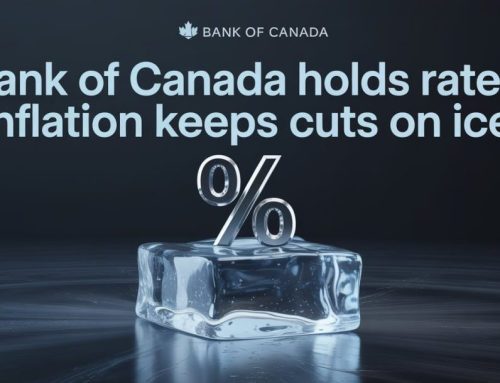Even with last week’s rate increase from the Bank of Canada, the spread between fixed and variable is still around 1.40%, which is larger than it has been in years.
While multiple rate increases are still expected in 2022, the large spread gives you additional cushion to protect variable rate holders against rising rates.
More rate increases are coming, so it’s important to be prepared for what is coming ahead.
Just Don’t Make This Mistake!
One of the biggest mistakes you can make is converting your variable rate mortgage into a fixed. I’m not saying that this is never a good idea, as there are times when it can be beneficial for some. But in most cases, converting your variable into a fixed can be a costly move.
This is why banks love it when people do this!
There are many who tend to panic when rates increase. After all, no one wants to pay more interest than they need to.
But what causes them to panic?
It could be something that they heard in the news, or what their friends have been telling them. Increasing rates can trigger the fear of loss, which can lead to panic. This can result in an irrational and potentially costly decision.
This is why I always recommend for our clients to reach out to us before making this decision.
Why Is Locking In Early A Bad Move?
What often happens is you lock in the higher fixed rate, only to see rates start to drop again. Just as mortgage rate increases are certain, so are the decreases to follow.
The more aggressive the Bank of Canada gets with their increases, the more aggressive they will get with decreases.
Just to be clear, I would not expect them to drop back down to where the rate is today. After all, it took a pandemic to bring them down to this level. As things start to return to normal, we can naturally expect the rates to do the same.
This is what is happening now.
It would take five more rate increases for today’s lowest variable rate to move above the lowest available 5 year fixed, so you don’t want to jump the gun. Even if this happens, it doesn’t mean that choosing a variable rate was the wrong decision. It just means that you’re now giving back some of your savings. You might be surprised at how many BOC rate increases are sustainable.
How To Maximize Your Savings with a Variable Rate Mortgage
If you’re still unsure as to which option is best for you, then consider choosing a variable rate, but then use your prepayment privileges to increase your payment to equal that of the 5 year fixed. If you’re contemplating going fixed, then you’re already prepared to make the higher payment that comes with it. But if you choose this option, then 100% of the difference in payment is applied to interest.
If you choose the variable, and then match the fixed rate payment, then 100% of the payment difference would be applied directly to your principal. You’re leveraging the lower rate to significantly accelerate the payoff of your mortgage. This applies equally to all mortgage lenders.
The rates will increase, and that we know.
But when you follow this strategy, you’re leveraging the lower rate to pay down your mortgage faster, therefore reducing the negative impact of the higher rates to come.
But we are not going to stop there!
You can then take it one step further by increasing your payment a bit more each year. Most people receive annual pay increases, which can make using this strategy quite painless for most.
This gives you two solid benefits:
1. Paying down your mortgage faster
2. Eliminating future payment shock created by rising rates
With Adjustable Rate Mortgages (ARMs), your payment will fluctuate with prime rate. Most floating rate mortgages (variable) fall into this category. There is nothing wrong with sitting back and enjoying the lower payment. But when prime rate increases, so does your payment.
This is something you need to be mentally prepared for. Even when you know that rate increases can be expected, the suddenly higher payment can still come as a shock.
By increasing your payment in advance, you’re staying one step ahead of the game. Your payment will still increase further once the BOC increases their rate, however you can always revert back to the lower payment if need be.
True Variable Rate Mortgages (VRMs)
With a true variable rate mortgage, the payment is remains the same throughout the entire five-year term. If the prime rate changes, then the portion of the payment that gets applied to principal vs. interest is what changes… not the payment itself. If the rate increases, then less is applied to principal and more to interest. If it decreases, then it’s the opposite.
This is particularly good when rates are decreasing, as your amortization is automatically reduced, therefore your mortgage gets paid down quicker without any action from you.
Where you need to be careful is in a rising rate environment, like we are in now.
Many have a goal to pay their mortgages down faster. However, if you don’t increase your payment manually, then you will be doing quite the opposite.
For example, you could start with a 30 year amortization, and still be left with 29 years remaining at the end of your five year term. This can be a frustrating position to be in, and is the disadvantage to having a true variable rate mortgage. This is yet another reason why I recommend utilizing your prepayment privileges. Sure, you’ll have built some equity (assuming we don’t see a major correction), but you might not make that big of a dent in your mortgage balance by the end of the term.
ARMs Vs. VRMs
While there is a distinct difference in the strict definition of an Adjustable Rate Mortgage and a Variable Rate Mortgage, most people use the term ‘variable’ interchangeably. This includes most mortgage professionals. The reason being is that this is the term that most people are familiar with, which makes it easier to explain options.
CONCLUSION
When mortgage rates are increasing, it makes the news, which then leads to conversation. People will form their own conclusions based on what they hear. There is no one size fits all mortgage advice, and what’s right for one person might not be right for another. This is why I always advise our clients to come to us first before making any mortgage related decisions. It can be hard to know what to do, especially when there is so much conflicting information out there. I’ve built my business on treating my clients like I would my own family, and this is exactly what you can expect when dealing with the Paul Meredith Team. The strategies I’ve provided above should help many to feel more comfortable with variable rate mortgages, while increasing their odds of coming out ahead. I discuss these (and others) in my Amazon #1 best selling book Beat The Bank – How To Win The Mortgage Game In Canada.








Leave A Comment